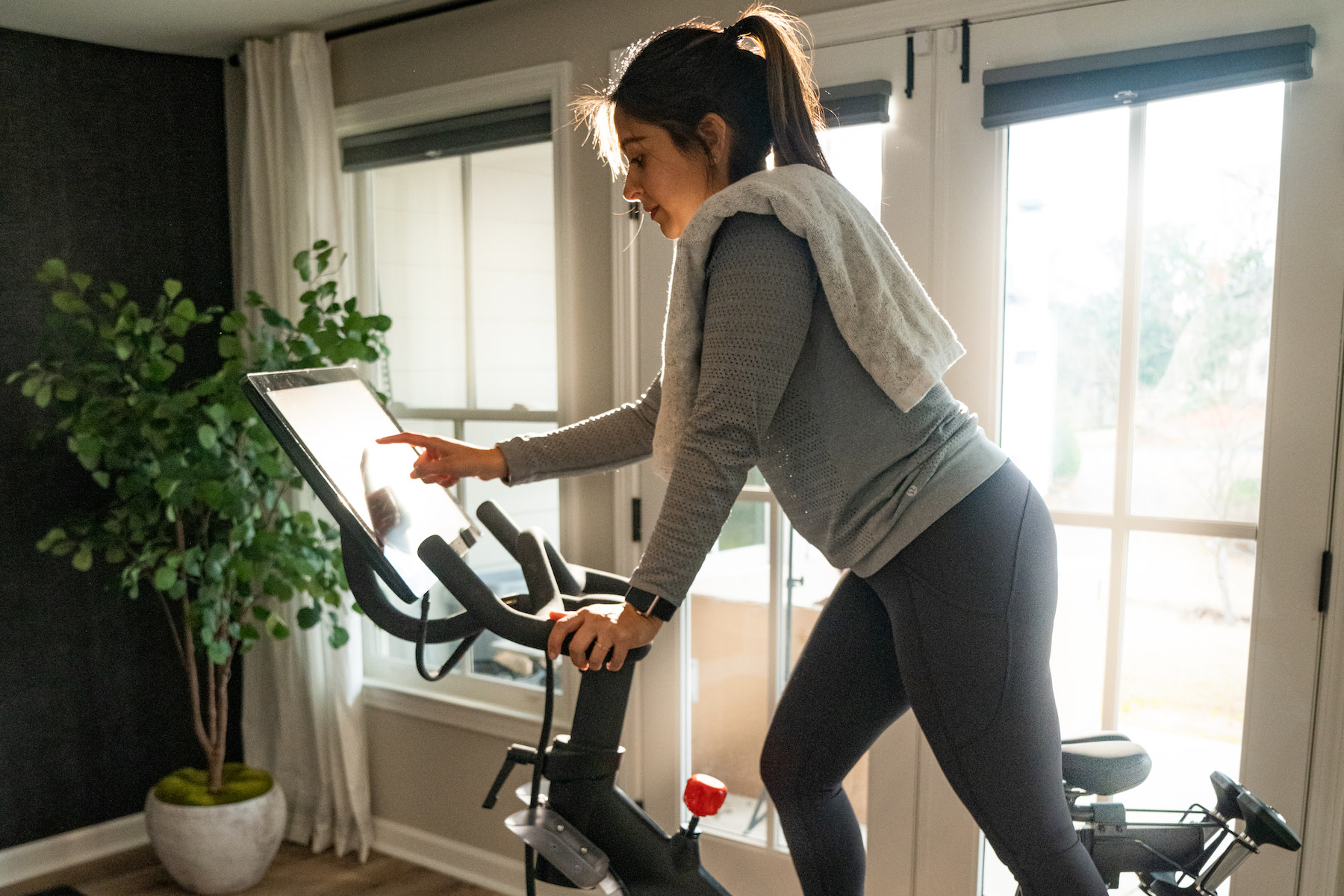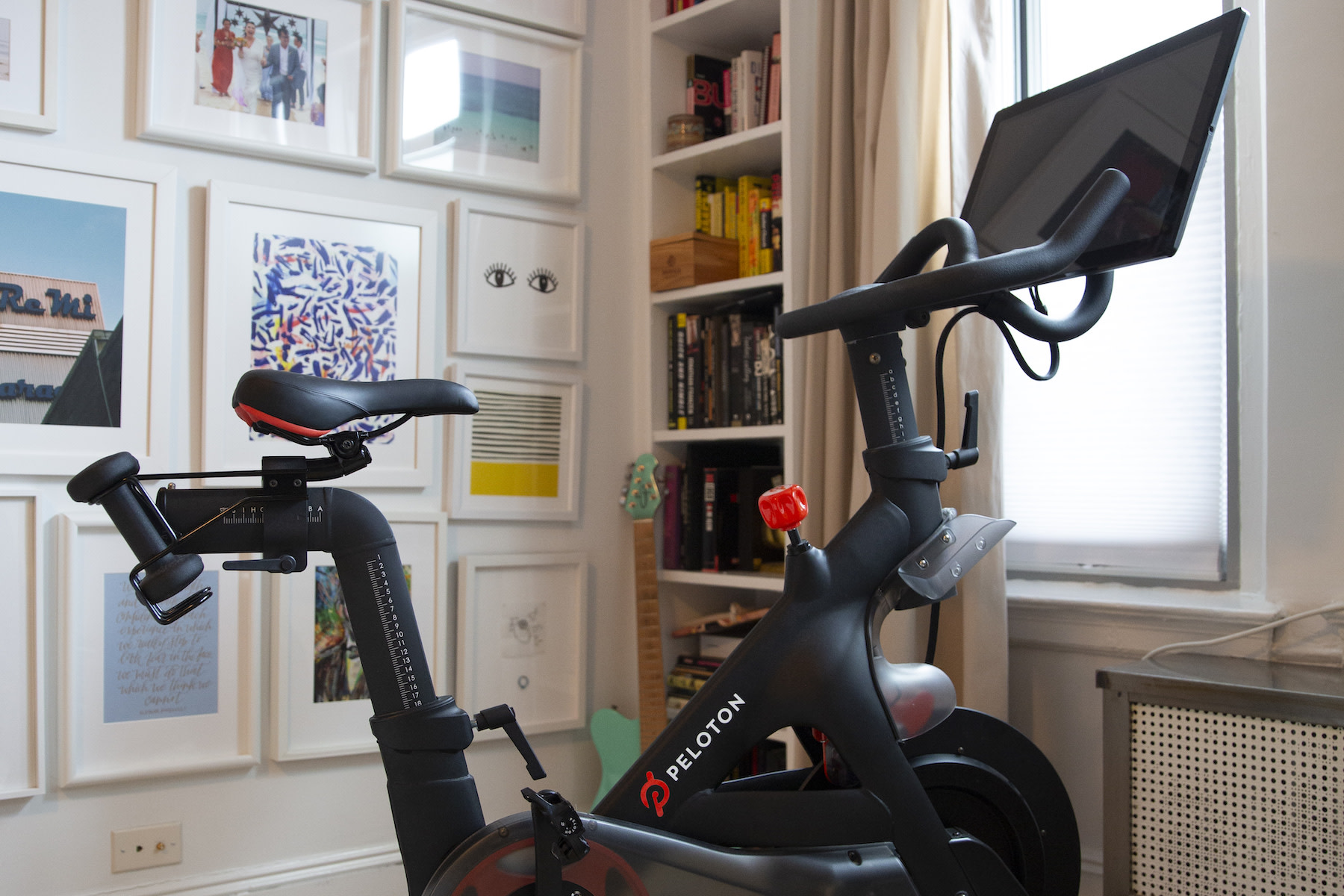
Here’s How to Tell If Your Bike Seat Is the Right Height
Proper setup is so important to your comfort and performance during every ride. Here’s what to know.
By Alyssa Sparacino•
Why It’s So Important to Get Your Bike Seat Height Right
What to Know About Adjusting Your Seat Correctly
Tips for How to Set the Saddle Height On Your Bike
How to Know When You Have the Right Bike Seat Height
Takeaway
You’ve got your favorite workout outfit on, your water bottle is filled, and shoes are officially clipped in, but if you just click “start” on that Peloton Cycling class, you could be missing one critical pre-pedal stroke step: Adjusting your bike seat height.
Whether you’re new to hopping on the saddle, someone else in your home also uses your Peloton Bike, or you're taking a class at a studio, you’ll need to know how to adjust your bike seat for proper alignment and optimal comfort and performance. This guide can help get you squared away.
Why It’s So Important to Get Your Bike Seat Height Right
Those tiny tweaks matter more than you think. “A correctly set seat height helps prevent injury and improves rider economy and power by optimizing the knee angle,” explains Peloton instructor Bradely Rose. There are lots of reasons to take an extra few minutes to make some changes to your bike seat height. The proper saddle height:
Prevents Injuries
The wrong bike seat height can cause knee and or back pain, not to mention stiff shoulders if you’re too far away from the handlebars, says Bradley. Specifically, you want to avoid your knee going too far forward, past your toes on the downward half of your pedal stroke as this puts pressure on the knee joint, he says. This tends to happen when the bike seat height is too low.
Conversely, a bike seat height that is too high can cause back pain as you have to hunch over and reach to connect to the handlebars, he says.
Boosts Comfort
Aside from avoiding acute joint injuries, adjusting your bike seat height simply allows for a more comfortable ride. While it’s true that proper alignment on your Bike might take some getting used to, the goal is to have a seat height and setup that allows for ease of movement—which is especially important as you jump from in and out of the saddle.
Improves Performance
The correct bike seat height allows for more efficiency and power in every pedal stroke, says Bradley. Ideally, you’re able to keep your foot flat as you press through the bottom of your foot with every forward stroke. If your bike seat is too high, you could be reaching with your toes, which doesn’t offer the same leverage to power your pedals. What’s more, leverage is important in every riding position (or moving between positions) as the transfer of weight happens quickly.

What to Know About Adjusting Your Seat Correctly
When you make any adjustments to your Bike setup, you want to consider your unique body type, prior injuries, and riding experience.
Bike seat height will vary depending on how tall you are as well as the length of your legs specifically, as you may have shorter legs and a longer torso, or vice versa. Adjust the bike seat height as a first step, then make additional changes to the distance between the saddle and the handlebars, followed by the handlebar height, says Bradley.
If it’s your first time on a cycling bike, the proper positioning of your seat height and other elements of the Bike may feel strange at first, so beginners may benefit from moving their handlebars up for a more upright positioning, says Bradley. And then adjust your seat heat as needed.
Previous injuries, particularly to your knee joints, should be taken into account when adjusting for bike seat height. Any excess pressure on those joints, along with the repetitive motion of the pedal stroke, may cause discomfort or additional injury.
Tips for How to Set the Saddle Height On Your Bike
There are a few different methods for adjusting your bike seat height, but as a starting point you can watch this Peloton Support video on Adjusting Your Bike and follow the tips below:
Stand tall next to the saddle of your Peloton Bike or Bike+ facing forward toward the handlebars.
Turn the knob below your seat to the left to loosen the seat.
Move the saddle to roughly align with the height of your hip bone.
Turn and tighten the same knob to secure the seat.
Get on the Bike, clip in, and test your adjustment with a few pedal strokes in first and second positions. Make any small adjustments to bike seat height (or handlebars) as needed.
P.S. You may have heard about the 109 percent rule for saddle height, which is a method that uses your inseam length multiplied by 1.09 to get a recommended height for your build. It may sound precise, but it comes with its caveats. If you want to use this method as a starting point, you can, but don’t rely on this technique more so than feeling and comfort, says Bradley. The 109 percent rule is based on averages, which doesn’t work for everyone or every body, and there are too many variables at play, he says.
Related Articles

Bike
The 3 Best Core Exercises for Cyclists—and How They Boost Your Output

Bike
The 3 Different Bike Riding Positions—Plus When and How to Do Them

Bike
Want to Up Your Output On the Bike? Here’s Why You Should Try Cross Training

Bike
How Do Indoor and Outdoor Cycling Compare? A Breakdown of the Benefits, Tips, and More
How to Know When You Have the Right Bike Seat Height
Once you’ve made adjustments to your bike seat height and have ridden a few times, you may be wondering if you’ve got the setup nailed or need to make some additional tweaks.
Again, a properly setup bike seat should feel comfortable enough to complete a class pain-free—also watch for pain after class, such as in your knees or back—and allow for strong control and stability over your movements throughout the ride.
Otherwise, you may benefit from making some seat height changes if your leg is completely straight or locked out at the bottom of the pedal stroke (you want a slight bend), or if you’re feeling “crammed into a position” or “bunched up” while riding in the saddle (which can indicate the seat is too high), says Bradley.
Takeaway
Making the necessary adjustments to your bike seat height and other aspects of your Bike are a necessary early step to any successful ride. Take the time ahead of class to make these changes and your comfort, enjoyment, and performance will show for it!

Peloton Bikes
Two bikes. One Peloton experience.
This content is for informational and educational purposes only and does not constitute individualized advice. It is not intended to replace professional medical evaluation, diagnosis, or treatment. Seek the advice of your physician for questions you may have regarding your health or a medical condition. If you are having a medical emergency, call your physician or 911 immediately.
Level up your inbox.
Subscribe for a weekly dose of fitness, plus the latest promos, launches, and events.
By providing your email address, you agree to receive marketing communications from Peloton.
For more about how we use your information, see our Privacy Policy.






